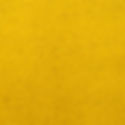
Finding the right fabric can sometimes be a jungle. Here is a rough guide to which fabrics were used for different periods and also some color trends.
When it comes to fabric choices for the poor and the rich, it's not always obvious either. A woolen fabric can be both simple and cheap or very fine and expensive. It could depend on whether the fabric was homemade or a bought imported fabric, if it was dyed at home with local plants or dyed at a dyer with imported expensive plants. In certain periods and areas there have also been strict laws regarding what the various social classes were allowed to wear. Silk could for example be reserved for the nobility.
Är du osäker på vad du ska välja är du välkommen att fråga oss så ska vi svara så bra vi kan.
VIKING AGE
793-1100 AD
Linen- for undergarments like tunics and underdress
Diamond twill- for apron dresses, tunics, pants, dresses, leg wraps.
Wool tabby- for tunics, dresses and pants
Wool twill- Thin for tunics, dresses and pants. Thick for outer garments.
Vadmal/broadcloth- for jackets, hoods and capes.
Herrinbone wool- pants, leg wraps
Striped wool- not very comon but exist, see guddal tunic.
Check/tartan wool- Large plaid for capes and blankets. Small plaids for tunics, aprondress ect but not super comon.
Silks- mostly for decorating parts of garments, maybe also whole garments.

linen fabric

tabby wool

wool twill

vadmal

medieval brocade

Herringbone dark blue

tartan wool fabric
Linen
Tabby wool
Wool twill
Melton
Silk brocades
Herringbone
Tartan wools
MIDDLE AGES
1065-1500 AD
Linen- for shirts, underdresses, panties, underpants and lining.
Wool tabby- for dresses, tunics and can also be used for hoses although its not as stretchy as twill.
Wool twill- Thin for tunics, dresses, pants and also thin capes.
-Check/tartan wool (not very comon but exist in cotehardies for example).
Striped wool (not very comon but exist in tunics and cotehardies).
Vadmal/melton- Heavy felted wool for outer garments.






Linen
Tabby wool
Wool twill
Silk brocade
Tartan wool
Melton
RENAISSANCE
1500-1600 AD
Wool, linen and hemp for the working class and fine wool and silks for the wealthy.
Linen & hemp- for shirts, underdresses, underpants and lining.
Broadcloth/wool tabby- for inner clothing. Finer broadcloths for wealthy people.
Wool twill- for kirtles, jackets and pants.
Vadmal/melton- heavy felted wool for outer garments.
Silk brocades- kirtles, jackets and pants.
Silk velvet- kirtles, jackets and pants.

white linen

dark red tabby wool fabric


gray green broadcloth vadmal
Linen
Tabby wool
Wool twill
Melton

silk taffeta

wool damast

green silk velvet

silk brocade
Silk taffeta
Wool damask
Silk velvet
Silk brocade
18th century
1700s
Roughly: Wool, cotton and linen for the common people and silk, cotton and linen for the noble/rich.
The common people clothing starts to vary more between countrys than earlyer centuries. They could sometimes also have finer fabrics like silk and printed cottons, but then the clothing would be very different from the upperclass fashion.
Linen- for shirts, underdresses and lining.
Plain cotton- for shirts, underdresses and lining.
Printed cotton- for dresses, skirts waistcoats and lady jackets.
Wool tabby- for skirts, jackes, waistcoats and pants.
Wool twill- for skirts, jackes, waistcoats and pants.
Vadmal/broadcloth- for outer garments.
Plain silks- for dresses, jackets, waistcoats, pants and capes.
Silk brocades- for dresses, jackets, waistcoats and pants.
Silk velvet- for dress details, jackets, waistcoats, pants and capes.
Silk chiffon- for scarfs

white linen



white silk chiffon vit sidenchiffong

cream silk brocade

light green silk duchess fabric


aprikos broderad sidentaft
Linen
Tabby wool
Wool twill
Silk chiffon
Silk brocade
Plain silk
Striped silk
Embroidered silk

tartan cotton

DHER2032-CHINABLUE
Linen
Tabby wool
19th century
1800s
Wool, cotton and linen for the common people and silk, cotton and linen for the noble/rich.
Linen- for shirts, underdresses and lining.
Plain cotton- for shirts, underdresses and lining.
Printed cotton- for dresses.
Wool tabby- for jackets and pants.
Wool twill- for jackets and pants.
Vadmal/broadcloth- for outer garments.
Plain silks- for dresses, jackets, pants and capes.
Silk brocades- for dresses, jackets and pants.
Silk velvet- for dress details, jackets, pants and capes.
Silk chiffon- for scarfs

white linen






Linen
Tabby wool
Wool twill
Melton
Silk chiffon
Check/tartan
Silk satin/duchess





